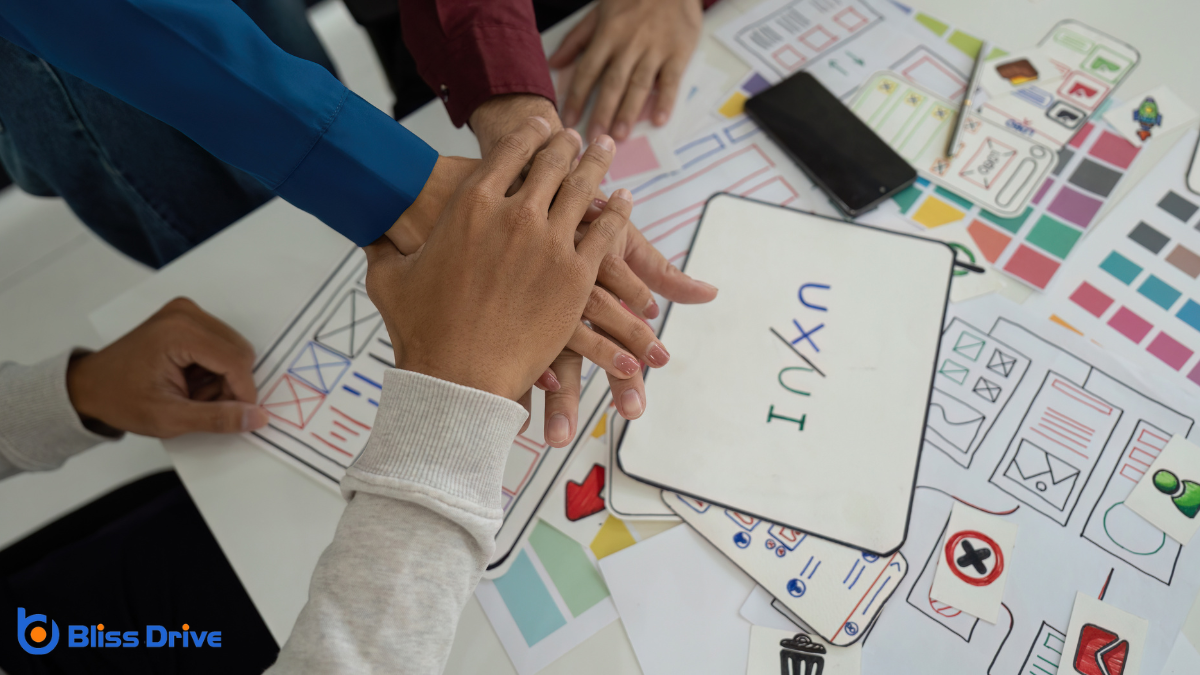Learn More About Us

Developers play an essential role in enhancing user experience by bridging the gap between design and functionality, guaranteeing that the visual and interactive elementsElements that require user interaction, such as buttons, forms, and sliders. are both appealing and intuitive. They optimize load times to boost performance and implement interactive features that keep users engaged. By prioritizing accessibility, developers guarantee that digital content is inclusive for all users. With their focus on prompt bug resolution, developers maintain software reliability. There's more to uncover about these contributions.
When developers and designers collaborate effectively, they create products that are both visually appealing and highly functional.
You’ll find that bridging the gap between design and functionality requires strong communication and a clear understanding between both parties. Developers need to grasp the designer’s vision while guaranteeing the technical feasibility of design elements.
It’s essential to use tools and frameworks that support this collaboration, allowing real-time feedback and adjustments. By doing so, you guarantee your product not only looks great but also works seamlessly.
Regularly discussing project goals and constraints helps maintain a balance between creativity and practicality. Embrace a mindset of flexibility and problem-solving, as this will enable you to overcome challenges and deliver a superior user experience.

Although design is essential, performance plays an equally important role in user experience, and optimizing load times is key to achieving better performance.
You've probably noticed that users get frustrated with slow-loading pages. You can prevent this by compressing images and minifying CSS, JavaScript, and HTML. These steps reduce file sizes, helping pages load faster.
Also, leverage browser caching to store files locally on users' devices. This way, returning visitors won't download the same files repeatedly.
Another tip is to use a content delivery network (CDN)A system of distributed servers that deliver content to users based on their geographic location.. A CDN distributes your site's data across servers worldwide, guaranteeing users access to data from the nearest server.
Prioritizing these strategies guarantees your site runs smoothly, keeping users engaged and satisfied.
To elevate user engagementThe interactions that users have with a brand’s content on social media., focus on implementing interactive elements that captivate and retain your audience's attention. Start by integrating intuitive navigation menus and clickable icons that make exploration seamless and fun.
Think about adding forms with real-time feedback, like instant error messages or success notifications, to keep users informed and involved. Use animations sparingly to highlight important actions, such as button clicks or form submissions, making the experience feel dynamic.
Incorporate features like drag-and-drop functionality or sliders for adjusting settings, giving users control over their interaction.
Don't forget about multimedia elements like videos or interactive infographicsVisual representations of information, data, or knowledge intended to present complex information qu..., which can enhance understanding and keep users engaged longer. Always test these elements across different devices to ascertain they perform smoothly, enhancing the overall user experience.
Creating an accessible digital environment is essential for guaranteeing that all users, regardless of their abilities, can navigate and interact with your platform effectively.
As a developer, you play a significant role in this process. You must focus on building features that accommodate diverse needs, making sure no one is left behind. This involves using semantic HTML for better screen reader compatibility and implementing keyboard navigation for users who can't rely on a mouse.
Consider these key practices:

Incorporating agile development methodologies into your workflow keeps you adaptable and responsive to user needs.
You'll find that continuous prototype testing guarantees you're consistently refining and improving your design.
When developers embrace Agile development methodologies, they foster a dynamic environment where collaboration and iterative design processes thrive. Agile encourages you to work closely with your team, promoting communication and flexibility.
This methodology helps you adapt to changes and enhance the user experience by continuously refining your product based on feedback. By breaking down projects into smaller, manageable chunks, you can focus on delivering value at every stage.
Although developing a product can seem intimidating, continuous prototype testing makes the process manageable by allowing you to focus on iterative improvements. This method helps you identify issues early, providing opportunities to refine and enhance the user experience gradually.
By testing prototypes frequently, you’re not just building a product; you’re crafting a solution that evolves with feedback. This approach fosters collaboration, as it encourages constant dialogue between developers, designers, and users. You’ll discover insights that might remain hidden without this iterative cycle.
Embrace the power of change and adaptability. Each test is a chance to fine-tune your product, ensuring it meets user needs more effectively.
Continuous prototype testing keeps you responsive, aligned with user expectations, and ultimately, creates a more polished and user-friendly experience.
Promptly addressing and fixing bugs is essential for maintaining a seamless user experience. When a user encounters a bug, it disrupts their interaction with your application, leading to frustration and potentially losing their trust.
As a developer, quickly resolving these issues shows your commitment to quality and user satisfaction. By prioritizing bug fixes, you contribute to a smoother, more reliable product.
Consider these key actions:
Your proactive approach guarantees users enjoy a hassle-free experience.
Integrating thoughtful features into your application can greatly enhance its usability and make it more appealing to users. Start by considering what your users really need.
Do they require a streamlined navigation system, or perhaps customizable settings for a personalized experience? Implement features that simplify tasks and address common user frustrations. For instance, adding shortcuts or predictive text can save time and effort.
Consistency in design elements also plays a significant role; make sure buttons, icons, and menus are intuitive and uniform across the app.
Don’t forget accessibility—ensuring everyone, including those with disabilities, can use your app is essential. By focusing on these aspects and listening to user feedback, you’ll create an application that feels intuitive and responsive to user needs.

In testing and quality assurance, you guarantee software reliability by catching issues before they impact users.
You identify usability problems early, allowing for efficient fixes that enhance the overall user experience.
While guaranteeing software reliability is essential, it often hinges on rigorous testing and quality assurance. As a developer, you play a critical role in this process by identifying potential issues before users encounter them.
Through systematic testing, you can verify that the software performs as expected under various conditions. Here’s how you can enhance reliability:
How can you guarantee a seamless user experience while testing and maintaining quality assurance? Start by putting yourself in the user's shoes. Test your software under real-world conditions and identify any roadblocks that disrupt the flow.
Utilize user feedback and analyticsThe systematic computational analysis of data or statistics to gain insights and support decision-ma... to uncover hidden usability issues. Don't just focus on functionality—make sure that the interface is intuitive and responsive. Remember, consistency is key; users expect predictable interactions.
As you evaluate, document any issues meticulously. This helps in understanding patterns and prioritizing fixes.
Collaborate with designers and stakeholders to make certain that the solution aligns with user needs. Practice empathy and listen to feedback, as it provides invaluable insights.
Accelerate your bug-fixing process by implementing efficient workflows and leveraging automationUsing software to send emails automatically based on predefined triggers and schedules. tools. By addressing bugs swiftly, you enhance user experience and build a more reliable product.
Start by prioritizing issues based on their impact and frequency. Use automated testing to catch errors early and reduce manual labor. Collaborate closely with your QA team to guarantee precise bug tracking and reporting.
Here are some strategies to streamline bug fixes:
These steps will appreciably improve your development process.
In today's rapidly evolving tech landscape, staying updated with the latest technologies is essential for developers who aim to deliver exceptional user experiences. When you embrace new tools and innovations, you can create more efficient, intuitive, and engaging applications.
It's not just about knowing the latest trends; it's about understanding how these advancements can solve user problems and enhance their journey.
You should regularly explore tech blogs, attend webinarsLive or recorded online presentations or seminars used to educate and engage an audience., and participate in developer communities. This helps you stay informed and exchange ideas with peers.
Implementing cutting-edge solutions can set your applications apart, making them more attractive and functional.
As a developer, you play an essential role in shaping user experience by bridging the gap between design and functionality. Your efforts in optimizing load times, implementing interactive elements, and guaranteeing accessibility make websites and apps more engaging and inclusive. By collaborating in iterative design processes and promptly addressing bugs, you enhance usability and reliability. Staying updated with the latest technologies assures you’re always ready to deliver innovative solutions that delight users and elevate their experience.
